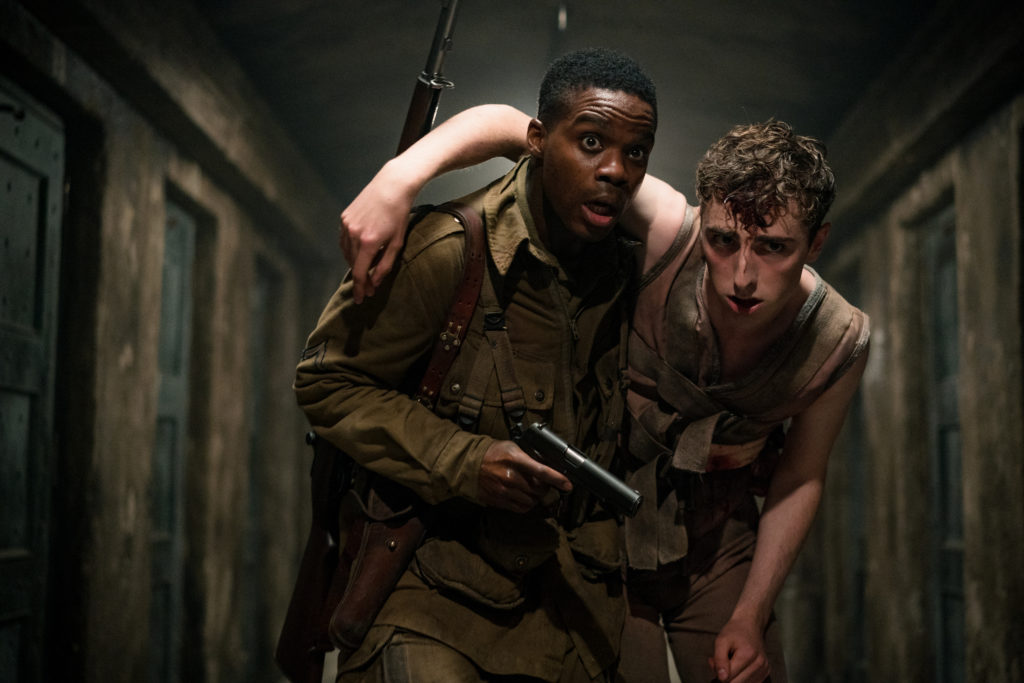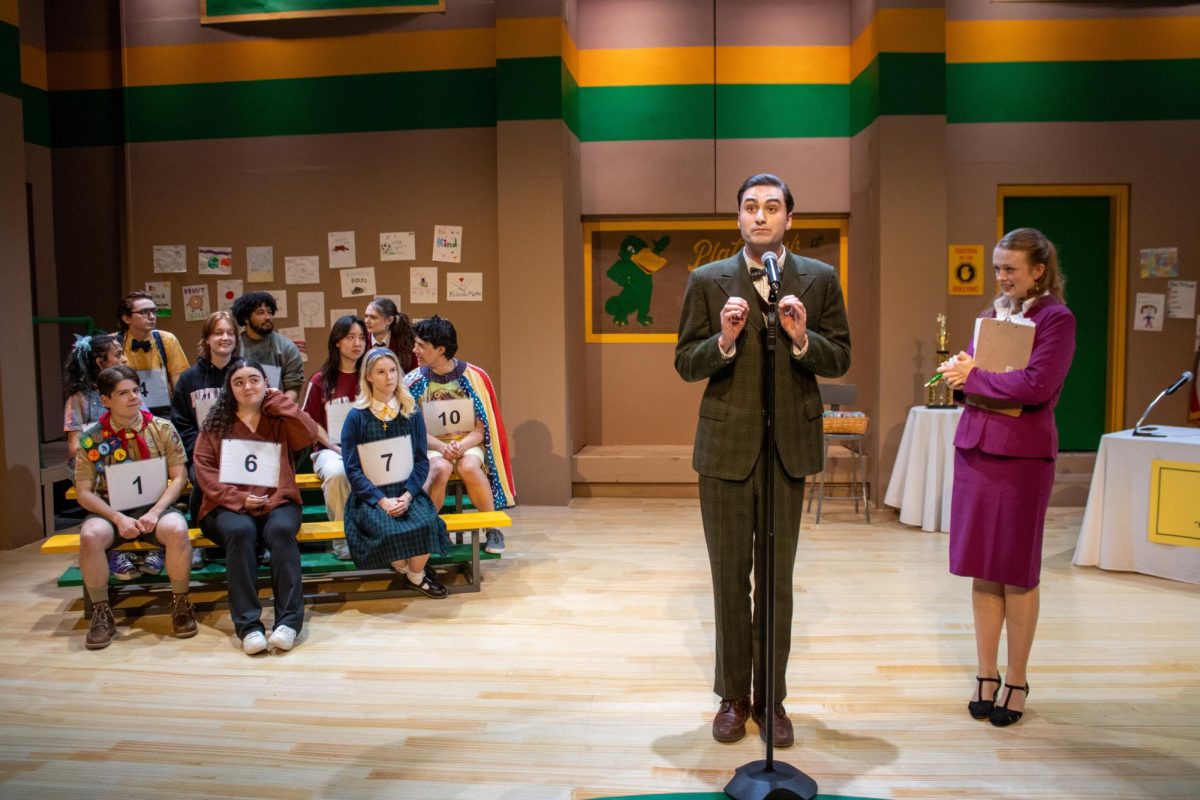By Mohit Puvvala, lifestyle columnist
The frenetic opening scene of “Overlord” harkens back to old war movies with its grainy texture and vintage themed fanfare. We focus on a group of World War II soldiers in an aircraft flying above France. They have one job: take out a Nazi tower that’s jamming the Allies’ radio signals. We meet our protagonist, Private Boyce (Jovan Adepo), as well as the leader of the group, Corporal Ford (Wyatt Russell). Right as the troops are getting rallied with old-fashioned 1940s talk, the plane is shot down by enemy forces. In a dazzling couple of minutes, Boyce, Ford and a handful of crew members escape the burning aircraft and parachute their way into enemy forces. Despite the setback, this dwindling group of soldiers is still set on accomplishing their mission.
If this was any other war movie, we’d know how this goes. However, this is produced by J.J. Abrams, who famously headlines all of his projects with a mystery box. Abrams defines his films by secrets, keeping the audience in the dark until he can pull a twist at the right time. The men find their way to a nearby town occupied by Nazi forces and meet a woman who suggests that there’s more to this tower than just a simple signal jammer. As the story quickly unravels, it is discovered that these Nazi scientists are injecting dead people with a special serum to attempt to bring them back alive.
So yeah, “Overlord” is basically a World War II Zombie film. I think a good way to describe it is “Call of Duty Zombies” meets “Inglourious Basterds.” Despite the simple combination, director Julius Avery not only crafts a solid zombie horror film, but also makes a great war drama. It has visceral action and well-designed scary moments that are built on a dramatic backbone that doesn’t come off as cheesy. The movie is well aware of its ridiculous premise, but manages to build a realized world all within a claustrophobic setting. Most of the film takes place in the small town and tower, which are both set up like a maze. Avery weaves the camera through specific set pieces that set themselves up well for future plot points. By the end of it, you know where everything is so you can follow along with the leads.
“Overlord” keeps its tempo by skipping many of the worn-out war clichés (such as obligatory campfire scenes in which characters talk about their families back home) and sticking with the universal themes of selflessness in the name of doing good. However, every character besides Boyce and Ford have relatively one-note character development. I think that’s just a by-product of horror movies needing expendable characters. I personally liked the relationship with one of the soldiers and a little kid who the group encounter early on in the film. Boyce is set up to be your pacifist war movie protagonist in that he can’t kill a mouse, let alone an enemy soldier. I’m sure you can guess where his arc goes. Out of the group, Ford is presented as the nuanced character. He spends the majority of the film keeping everyone focused on the mission, but Wyatt Russell’s portrayal adds a relatable element to the character with his portrayal. As a fun fact, Russell is actor Kurt Russell’s son, and he proves himself to be a more than worthy successor to his action hero father.
Then there are the Nazis and the zombies. Pilou Asbaek from “Game of Thrones” plays the commanding Nazi officer Wafner, and he does a great job just being an evil, unhinged (sometimes even cackling) and over-the-top villain. The zombies themselves look phenomenal. While I’m sure there was some minor CGI used with them, they all felt practical, which is a major plus for zombie movies. I also liked how there weren’t hordes of zombies like “World War Z.” There were only a handful, which makes the primal fear of the undead all the more effective.
Avery paces the film very well, holding its fast beat established from the opening scene all the way to the climax. It’s dirty, gory and loud, which all describe the war itself. The film does a fantastic job of keeping the viewers guessing with its surprises, but it could have benefited from a more impactful ending. There were a couple of times in the film that Avery added visual cues to foreshadow future scenes, something that’s a horror staple. However, a lot of these become red herrings and ultimately serve solely for worldbuilding purposes. I personally would have loved to see these cues pay off towards the climax since it seemed like that’s where it was going. For example, in a small scene, there’s a body bag attached to the ceiling with something alive in it, but the film never utilizes it. In the beginning, the group encounter a rotting corpse of a dog-like beast that is implied to be an experiment gone wrong, but we don’t see what that beast was. These missed opportunities could have further built the film’s tension.
I went into this film asking to see heroic Allied soldiers punch Nazi zombies in the face. Boy, did I get that and more. “Overlord” checks all the boxes of a fun horror romp. It hones in on its captivating premise, has some great scares and uses creative visual storytelling. It also works as a reminder of the World War II films of the past that celebrated heroism in the face of seemingly impossible odds. While it lacks in some plot details that could have fleshed out the world a little more, it boasts enough of the right ingredients to make an effective movie.















